The Tian Tan Buddha statue is the Dharma jewel of Hong Kong and the protector of mainland China. However, this landmark statue is also a depiction of the founder of Buddhism – Shakyamuni Buddha. Additionally, the “Altar of Heaven” serves as the base of the statue.
However, another compelling aspect of the statue is the mountaintop location. Indeed, traveling to the Tian Tan Buddha statue is a very scenic journey which makes it a full day adventure. What more could we ask for? Indeed, the iconic destination will be awe inspiring to all who venture to go there.
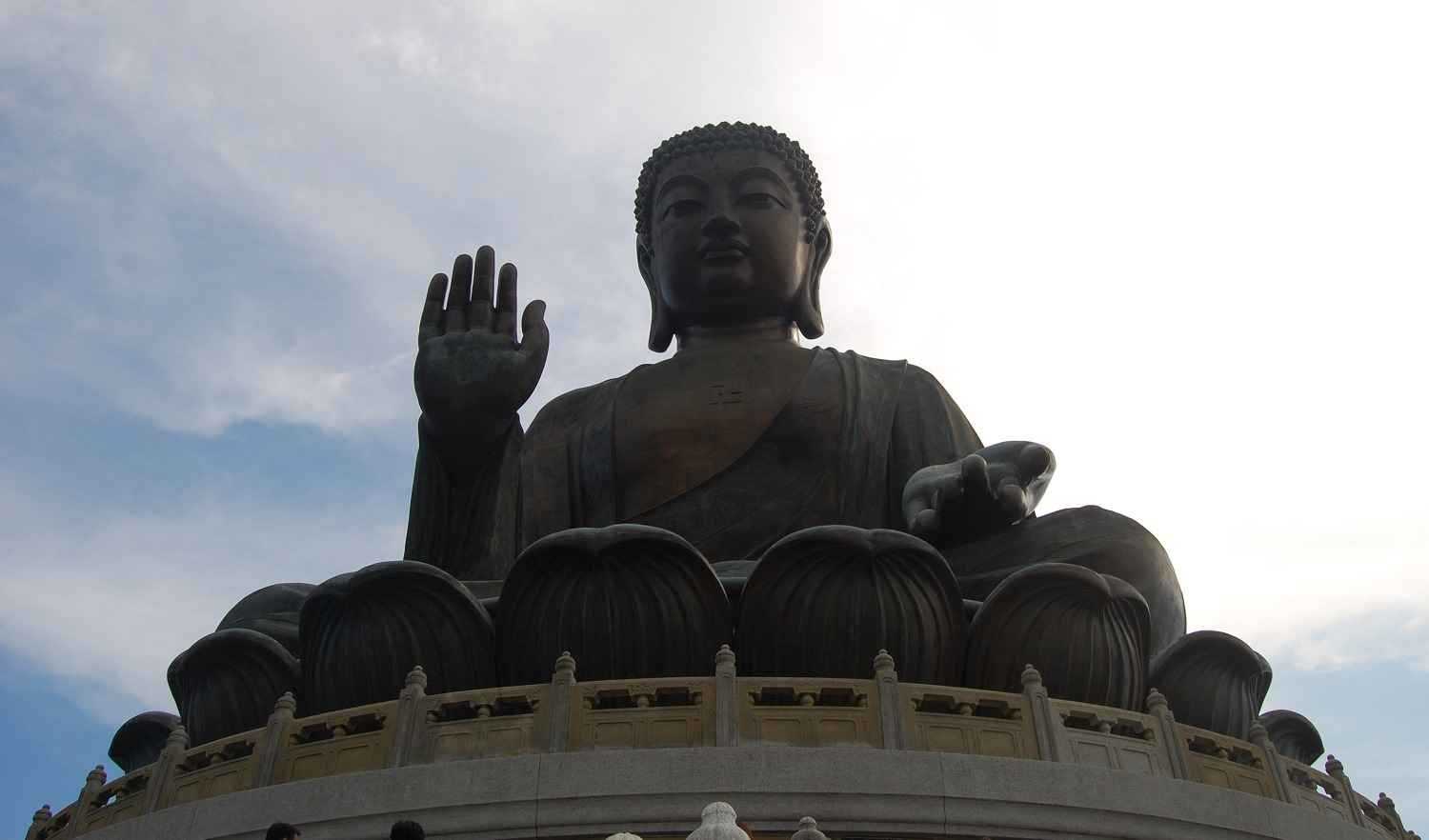
Tian Tan Buddha Facts and History
Construction of the Big Buddha in Hong Kong was initiated in 1990 and completed 3 years later. Additionally, the Tian Tan Buddha is constructed entirely of bronze with a height of 34 meters and weight of 250 metric tons.
Gautama Buddha is enthroned on a lotus flower pedestal situated on top of the 3 platform altar. The 3 floors within the altar are known as the halls of the Universe, Benevolent Merit and Remembrance. Additionally, surrounding the Tian Tan Buddha are bronze statues of 6 Devas who represent the “6 Perfections” of Buddhism.
Dignitaries traveled from around the world to celebrate the completion of the statue. Indeed, the big Buddha is the center of Buddhism in Hong Kong and it is a major attraction for Chinese Buddhists as well as international visitors.
The destination is named after the “Altar of Heaven” (Tian Tan) in Beijing, China. This is because the Big Buddha rises above a three level platform, similar to the Altar of Heaven. As a result, the Big Buddha is appropriately named the “Tian Tan” Buddha.
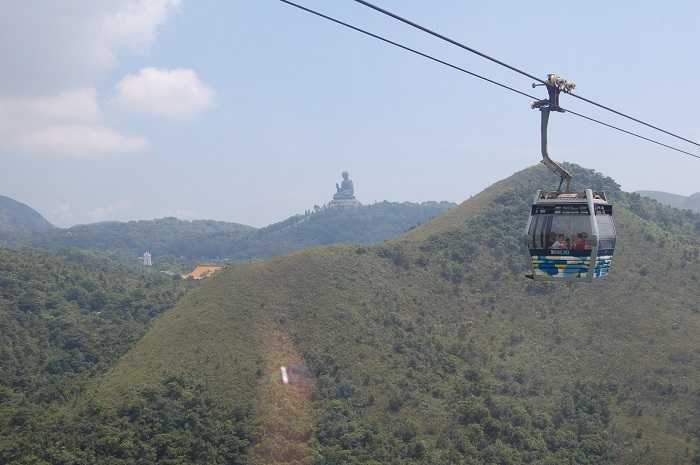
The Ngong Ping highlands on Lantau Island, is where the Tian Tan Buddha majestically sits on top of a mountain. As a result, on a clear day, it is possible to see the statue all the way from Macau. From his perch on Lantau Island, the Tian Tan Buddha offers protection and gifts to the mainland.
How to get to Tian Tan Buddha
As with some of the other iconic Buddha statues in Asia, getting there is almost as much fun as viewing it! Additionally, the big Buddha is surrounded by hiking trails and magnificent view points.
The most practical way to get to Tian Tan Buddha from Hong Kong Island is to take the MTR. As such, from Hong Kong Station take the Tung Chung Line to Tung Chung Station. Next, simply exit the Tung Chung terminal and walk about 800 meters to the Tian Tan Buddha cable car station (Ngong Ping 360) and from there – enjoy the scenic ride.
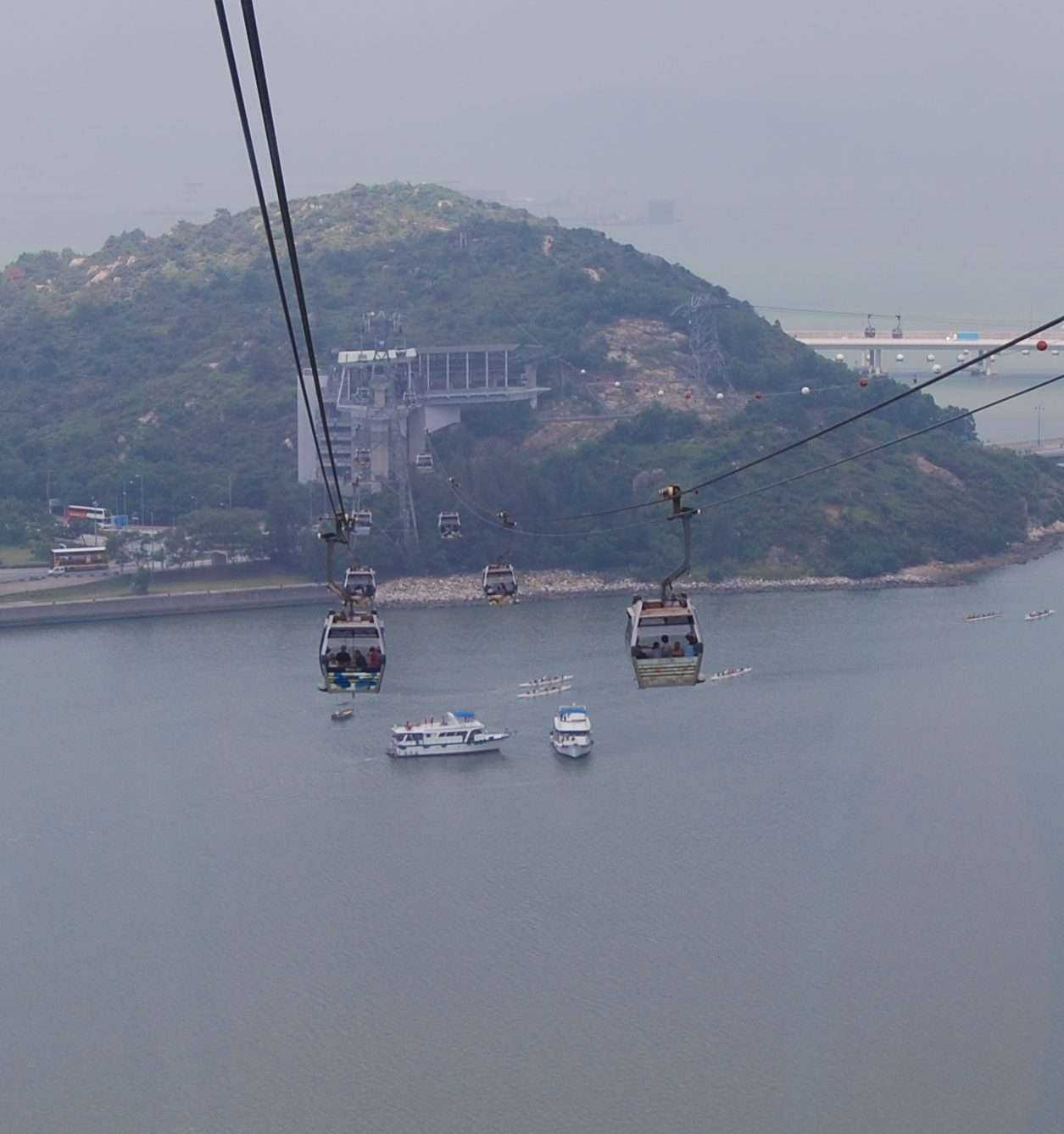
It is also possible to hike in. However, the hike is nearly 10 kilometers uphill, as such it is only for the stout hearted. Fortunately, the cable car takes visitors straight to the top of the mountain. However, there is still a short hike to the final path of 268 steps to reach the base of the big Buddha statue.
The Meaning of Tian Tan Buddha Statue
The meaning and identity of Buddha statues is best revealed by studying their poses and postures. As such, the Tian Tan Buddha statue is depicting one of the most important mudras called the Abhaya mudra. Although this mudra is associated with Shakyamuni Buddha (a.k.a. Gautama Buddha), it is not exclusive to him.
The Abhaya mudra is most commonly depicted with the flat right hand held at shoulder height with bent elbow. Additionally, the fingers are closed and the palm is facing outwards. It is a gesture of fearlessness or protection. It is also possible to display the Abhaya mudra with the left hand, but it is less common.
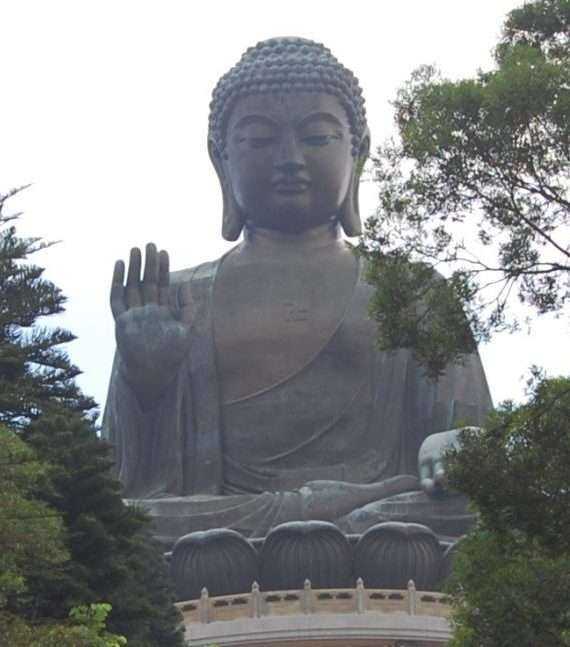
Furthermore, it is important to note that the Big Buddha is depicting a second mudra. Indeed, the left hand of the statue is displaying the Varada mudra, also known as the gift giving or boon granting mudra. This Varada mudra is expressed with a flat hand and open palm resting on the left knee, facing away from the body of the statue. Indeed, the Buddha is offering the gift of protection.
Story of the Abhaya Mudra
While the historical Buddha was leading some followers through the forest, a large elephant emerged from the brush and charged at them. However, when the elephant attacked, the Buddha raised his right hand in this same manner as the Abhaya mudra. The elephant stopped charging and it disappeared back into the forest. As a result, the Buddha and his followers were not harmed. This incident has become well documented in several Buddhist texts and also depicted in many frescoes on the walls of Buddhist monasteries.
The 6 Devas Surrounding the Buddha
The large Shakyamuni Buddha statue is surrounded by 6 smaller bronze Deva statues on all sides that are offering gifts to the Buddha. Each Deva is poised and holds out flowers, incense, lamp, fruit, ointment and music to the Buddha. Symbolically, the 6 gifts represent the 6 perfections of Buddhism that are necessary to reach enlightenment – morality, patience, generosity, zeal, meditation and wisdom.
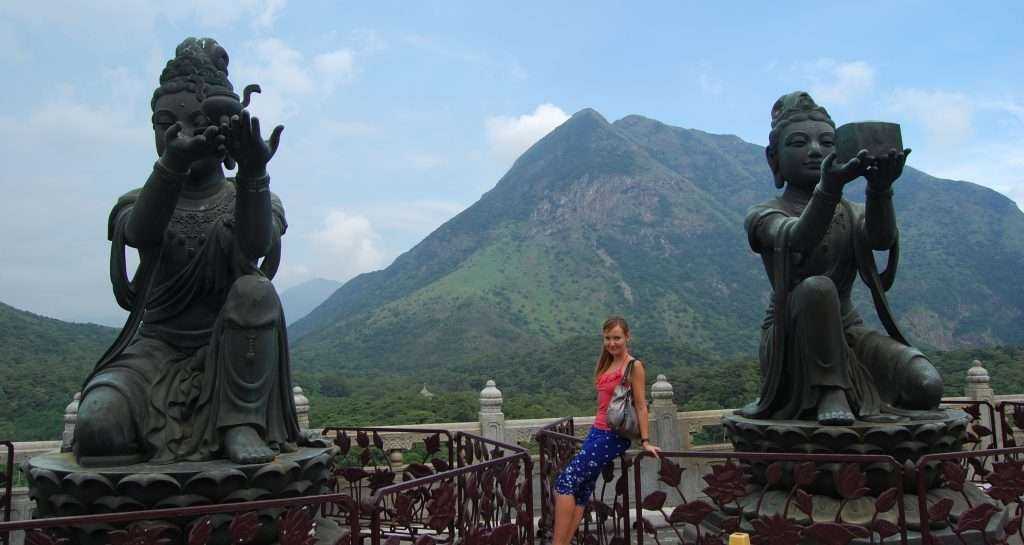
The World’s Greatest Buddha Statues
There are many great Buddha statues in the world and this is certainly one of the best. However, it is still a fairly young statue and it will certainly have many centuries to become the world’s greatest. Therefore, I gave it a second place rating on my list of the world’s greatest Buddha statues. Indeed, the Leshan Buddha reigns supreme and it is located in mainland China.

